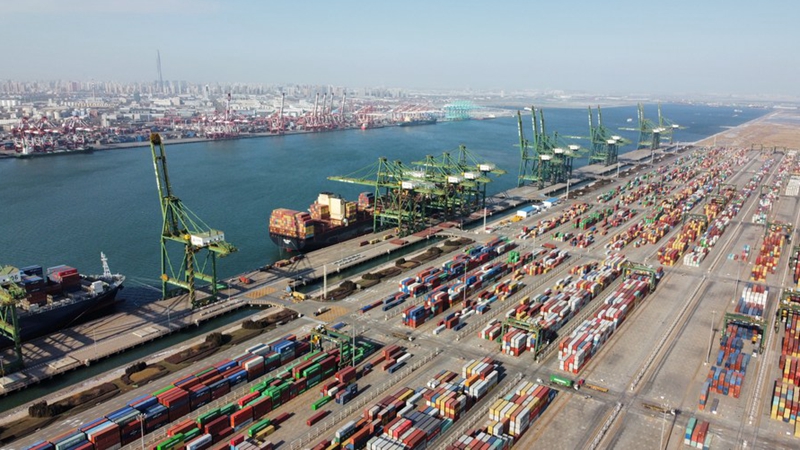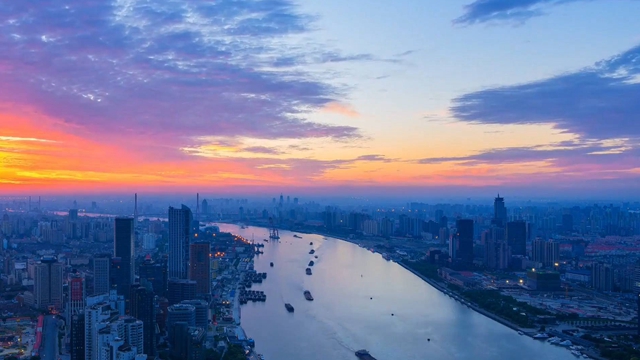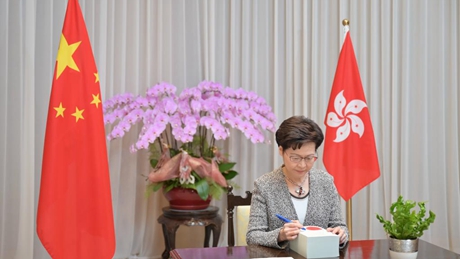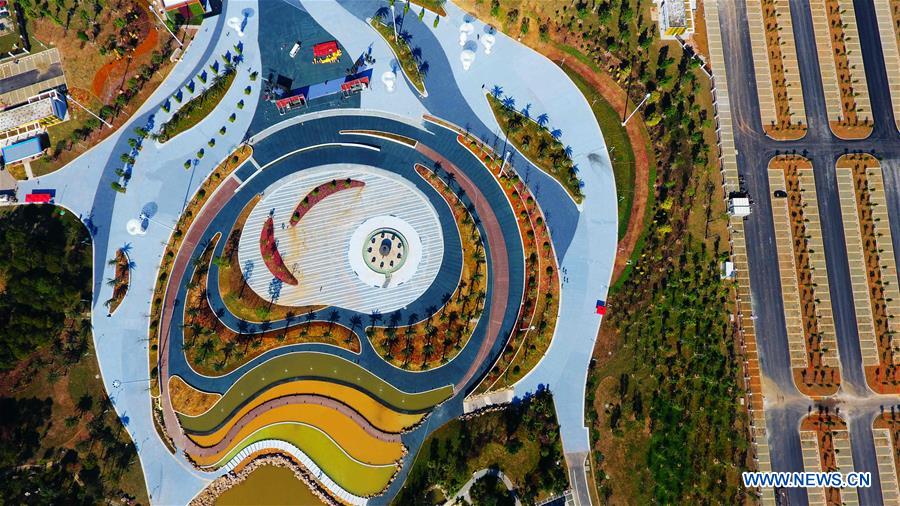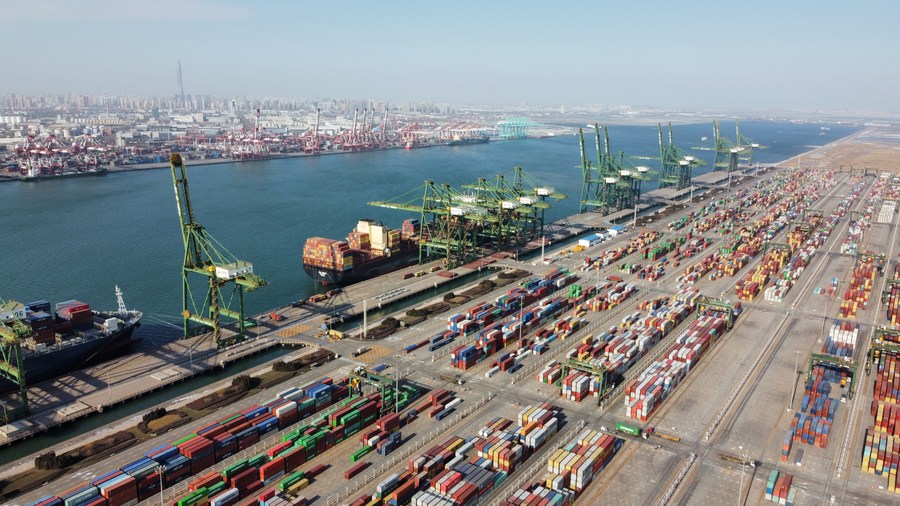
Aerial photo taken on Jan. 11, 2021 shows a view of the Pacific international container terminal at Tianjin Port in north China's Tianjin Municipality. (Xinhua/Zhao Zishuo)
Wu Da, deputy manager of Tianjin China-Railway United International Container Co., Ltd., said China-Europe freight trains now operate twice a week from and to Tianjin Port, with more than 10,000 containers delivered a year.
"The sea-railway transportation of Tianjin Port has ensured the import and export of cargo between China and multiple cities in East, Central and West Asia, and Europe during the pandemic, contributing to the foreign trade and supply chain stability," he said.
The total TEU number delivered by trains through the port surged from about 100,000 in 2015 to 805,000 last year. To meet the rising demand, Wu's company has planned to extend the railway line directly to the port and expand the cargo terminal.
The number of container ship routes connecting Tianjin Port and the countries along the 21st Century Maritime Silk Road has increased from over 30 in 2019 to about 50 now, and more than 60 percent of the port's total cargo turnover comes from ports of these countries.
The port is also a pivotal shipping outlet in the Beijing-Tianjin-Hebei area.
Since 2014, when China initiated a key strategy to coordinate the development of Beijing, Tianjin and Hebei, Tianjin Port and neighboring ports in Hebei Province have cooperated to make themselves a world-class port cluster.

